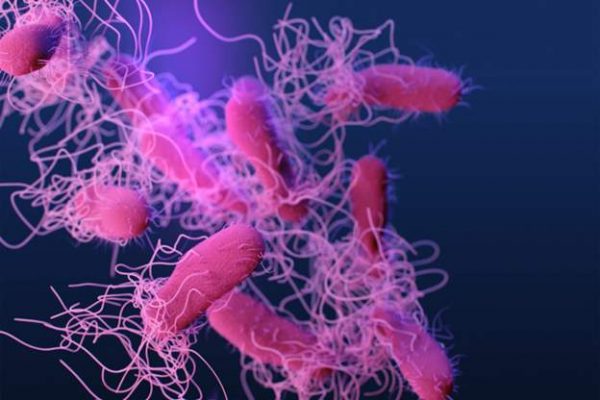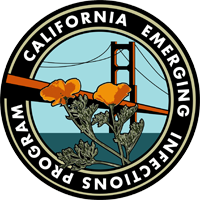
Overview
FoodNet is a collaborative project of the Centers for Disease Control and Prevention (CDC), the EIP network, the US Department of Agriculture (USDA), and the Food and Drug Administration (FDA). CEIP’s FoodNet project works in close partnership with local and state health jurisdictions to implement active surveillance and epidemiologic studies designed to help public health officials better understand the epidemiology of foodborne diseases in the United States. The ten FoodNet sites nationwide serve as a network for responding to new and emerging foodborne diseases of national importance.
Objectives
- Determine the burden of foodborne illness in the United States
- Monitor trends in the burden of specific foodborne illness over time
- Attribute the burden of foodborne illness to specific foods and settings
- Disseminate information that can lead to improvements in public health practice and the development of interventions to reduce the burden of foodborne illness
Main Components
- Active surveillance for selected foodborne pathogens
- Enhanced foodborne outbreak response and reporting
- Physician, population, and laboratory surveys to determine the burden of foodborne illness
- Special surveillance projects to determine risk factors for foodborne illness
Surveillance
The core activity of CEIP’s FoodNet project is laboratory-based active surveillance at over 30 clinical and reference laboratories that test stool samples in the catchment area, which consists of Alameda, Contra Costa, and San Francisco counties. FoodNet personnel identify and collect demographic, clinical, epidemiologic, and laboratory information on all laboratory-confirmed cases of selected foodborne illnesses from catchment area laboratories.
Case Definitions
Pathogens under surveillance include Salmonella, Shigella, Campylobacter, Shiga toxin-producing E. coli (STEC), Listeria monocytogenes, Yersinia, Vibrio, and Cyclospora. In addition to laboratory surveillance for these pathogens, FoodNet conducts active surveillance for pediatric hemolytic uremic syndrome (HUS) through a network of nephrologists in the catchment area.
Data Overview
Data are transmitted electronically to CDC and combined with data from other EIP FoodNet sites for analysis. Trends in incidence are published annually in the Morbidity and Mortality Weekly Report (MMWR). FoodNet data are also used for other analyses such as periodic estimates of the burden of foodborne illness in the United States.
CDC’s FoodNet Website
Contact
Katie Wymore, MPH
Project Coordinator, FoodNet
foodnet@ceip.us
Selected Publications
- Logan C Ray, Daniel C Payne, Joshua Rounds, Rosalie T Trevejo, Elisha Wilson, Kari Burzlaff, Katie N Garman, Sarah Lathrop, Tamara Rissman, Katie Wymore, Sophia Wozny, Siri Wilson, Louise K Francois Watkins, Beau B Bruce, Daniel L Weller, Syndromic gastrointestinal panel diagnostic tests have changed our understanding of the epidemiology of Yersinia enterocolitica—Foodborne Diseases Active Surveillance Network, 2010–2021, Open Forum Infectious Diseases, 2024. ofae199.
- Delahoy MJ, Shah HJ, Weller DL, et al. Preliminary Incidence and Trends of Infections Caused by Pathogens Transmitted Commonly Through Food — Foodborne Diseases Active Surveillance Network, 10 U.S. Sites, 2022. MMWR Morb Mortal Wkly Rep 2023;72:701–706. DOI: http://dx.doi.org/10.15585/mmwr.mm7226a1.
- Marder EP, Cui Z, Bruce BB, Richardson LC, Boyle MM, Cieslak PR, Comstock N, Lathrop S, Garman K, McGuire S, Olson D, Vugia DJ, Wilson S, Griffin PM, Medus C. Risk Factors for Non-O157 Shiga Toxin-Producing Escherichia coli Infections, United States. Emerg Infect Dis. 2023 Jun;29(6):1183-1190. doi: 10.3201/eid2906.221521. PMID: 37209671; PMCID: PMC10202860.
- Collins JP, Shah HJ, Weller DL, Ray LC, Smith K, McGuire S, Trevejo RT, Jervis RH, Vugia DJ, Rissman T, Garman KN, Lathrop S, LaClair B, Boyle MM, Harris S, Kufel JZ, Tauxe RV, Bruce BB, Rose EB, Griffin PM, Payne DC. Preliminary Incidence and Trends of Infections Caused by Pathogens Transmitted Commonly Through Food – Foodborne Diseases Active Surveillance Network, 10 U.S. Sites, 2016-2021. MMWR Morb Mortal Wkly Rep. 2022 Oct 7;71(40):1260-1264. doi: 10.15585/mmwr.mm7140a2. PMID: 36201372; PMCID: PMC9541031.
- Ray LC, Griffin PM, Wymore K, Wilson E, Hurd S, LaClair B, Wozny S, Eikmeier D, Nicholson C, Burzlaff K, Hatch J, Fankhauser M, Kubota K, Huang JY, Geissler A, Payne DC, Tack DM. Changing Diagnostic Testing Practices for Foodborne Pathogens, Foodborne Diseases Active Surveillance Network, 2012-2019. Open Forum Infect Dis. 2022 Jul 25;9(8):ofac344. doi: 10.1093/ofid/ofac344. PMID: 35928506; PMCID: PMC9345410.
- Mody RK, Hoekstra RM, Scott MK, Dunn J, Smith K, Tobin-D’Angelo M, Shiferaw B, Wymore K, Clogher P, Palmer A, Comstock N, Burzlaff K, Lathrop S, Hurd S, Griffin PM. Risk of Hemolytic Uremic Syndrome Related to Treatment of Escherichia coli O157 Infection with Different Antimicrobial Classes. 2021 Sep 21;9(9):1997. doi: 10.3390/microorganisms9091997. PMID: 34576892; PMCID: PMC8466573.
- Ray LC, Collins JP, Griffin PM, Shah HJ, Boyle MM, Cieslak PR, Dunn J, Lathrop S, McGuire S, Rissman T, Scallan Walter EJ, Smith K, Tobin-D’Angelo M, Wymore K, Kufel JZ, Wolpert BJ, Tauxe R, Payne DC. Decreased Incidence of Infections Caused by Pathogens Transmitted Commonly Through Food During the COVID-19 Pandemic – Foodborne Diseases Active Surveillance Network, 10 U.S. Sites, 2017-2020. MMWR Morb Mortal Wkly Rep. 2021 Sep 24;70(38):1332-1336. doi: 10.15585/mmwr.mm7038a4. PMID: 34555002; PMCID: PMC8459900.
More Foodborne Diseases Active Surveillance Network (FoodNet)
